Recalculating the equation: 'Tetra Zeros' at Mulberry Art Gallery
An exhibition of six "self-portraits" is an exploration of multiracial identities. The works will be on view at the Revolutsia gallery through September 13.
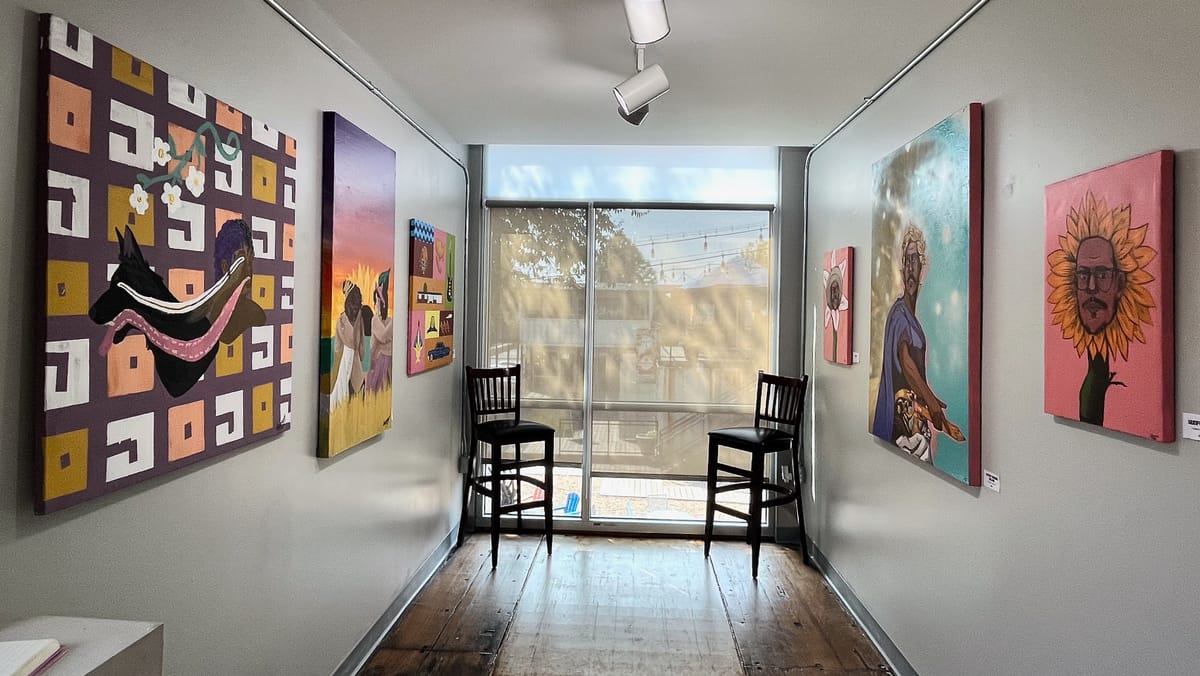
Showing at Mulberry Art Gallery until Sept. 13, the six-work exhibition "Tetra Zeros" is small but mighty. Both conceived and curated by Wichita artist and competitive jujitsu fighter Juanta Wolfe, "Tetra" explores multiracial experience, primarily through the self-conception of the multiracial artists themselves.
Named after a combination of the Greek word “tetra” meaning "to have four parts" and the number 0 — a number which upon googling I learned is known as the "neutral integer," considered a "whole but not necessarily natural number" — the show's title can be expressed as the operation 4/0. It’s what Mulberry calls "an undefined number representing how none of us can be defined by 'normal' heritage or racial experience."
The genius of the title is multilayered. The use of division recalls the centuries of racial hair-splitting that enjoyed such varied applications as antebellum race laws, the Spanish Las Castas, and the blood-quantums by which the U.S. Bureau of Indian Affairs stole 90 million acres of land from American Indians. The choice to divide four by zero recalls that we each have four grandparents — typically, the numerator would be one, as in "one whole Mexican," and the denominator would be between one and four (four being the maximum number of grandparents).
In my case I have only one "whole Mexican" grandparent, which is one of four, or .25, making me ¼ of a whole Mexican. "Tetra zero," or 4/0, uses the monster's own riddle to confuse the monster's mathematics.The designation of zero as not "necessarily natural" echoes Mulberry's usage of "normal." I like natural because after all we are talking about bodies here — bodies upon which a constant ledger is maintained; bodies like scratch paper where some dark force does its "rough calculations."
Thus, it's not surprising that the images of "Tetra Zeros" are mostly figural, sneak-peeks into a co-opted subjectivity whereby the artists represent themselves looking at themselves to perhaps show you how they'd like to be seen. The French philosopher Jean-Paul Sartre, when dealing with the subject-object dichotomy, used the phrase "mauvaise foi" — or "bad faith" — to describe the existential mode wherein we live painfully aware of our own objectivity, of being perceived, while undervaluing our subjectivity, or being in the world as perceptive agents. The level of scrutiny outlined above and which is placed on multiracial bodies is precisely the bad faith which the "Tetra Zeros" artists try to dispel.
In Wolfe's piece entitled "Tater Caesar Salad," the artist paints himself on canvas donning the regalia of a Roman emperor, but bearing a large, cartoonish No. 2 pencil rather than a sword or scepter. When I spoke with Mulberry Creative Director and founder Anthony Joiner about the piece, he told me that it evoked a balance between hard and soft, alluding to Wolfe's own creative spirit which lives in his battle-trained physique; or as Joiner put it, "Yes I'm an artist, but I'll beat your ass." In Wolfe's other two works on exhibit, "Sunflower" and "Lily," the artist's face blooms forth from those flowers, demanding the viewer to see beauty in strength and vice versa.


Works by Juanta Wolfe, from left: "Tater Caesar Salad" and "Lily." Photos by Jeromiah Taylor for the SHOUT
Ayanna Saunders, who has two untitled works in the show, also makes use of flowers. In one painting, two women sit in a field of yellow, with a setting sun(flower) in the background. One of the two sits with her face in her lap, which I read as her being distraught, while the other sits with her neck turned to the first, wearing an expression more curious and appraising than plainly sympathetic. Saunders' other piece depicts a geometric field reminiscent of Meso-American motifs. While a small floral branch graces the upper left corner of the canvas, the center of the painting consists of a person and a wolf whose eyes and tongues are one — literally pink and white lines painted between both faces.
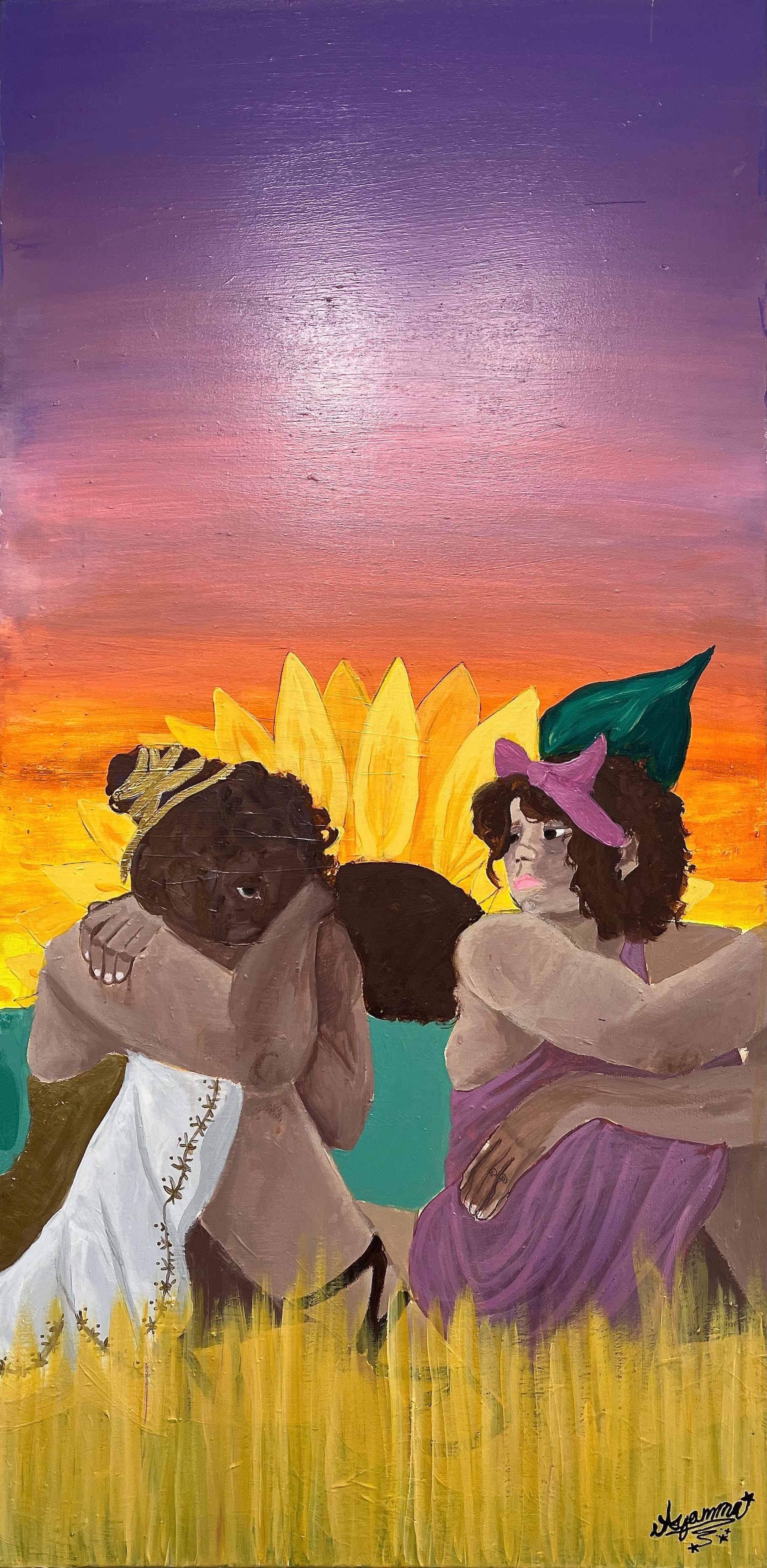
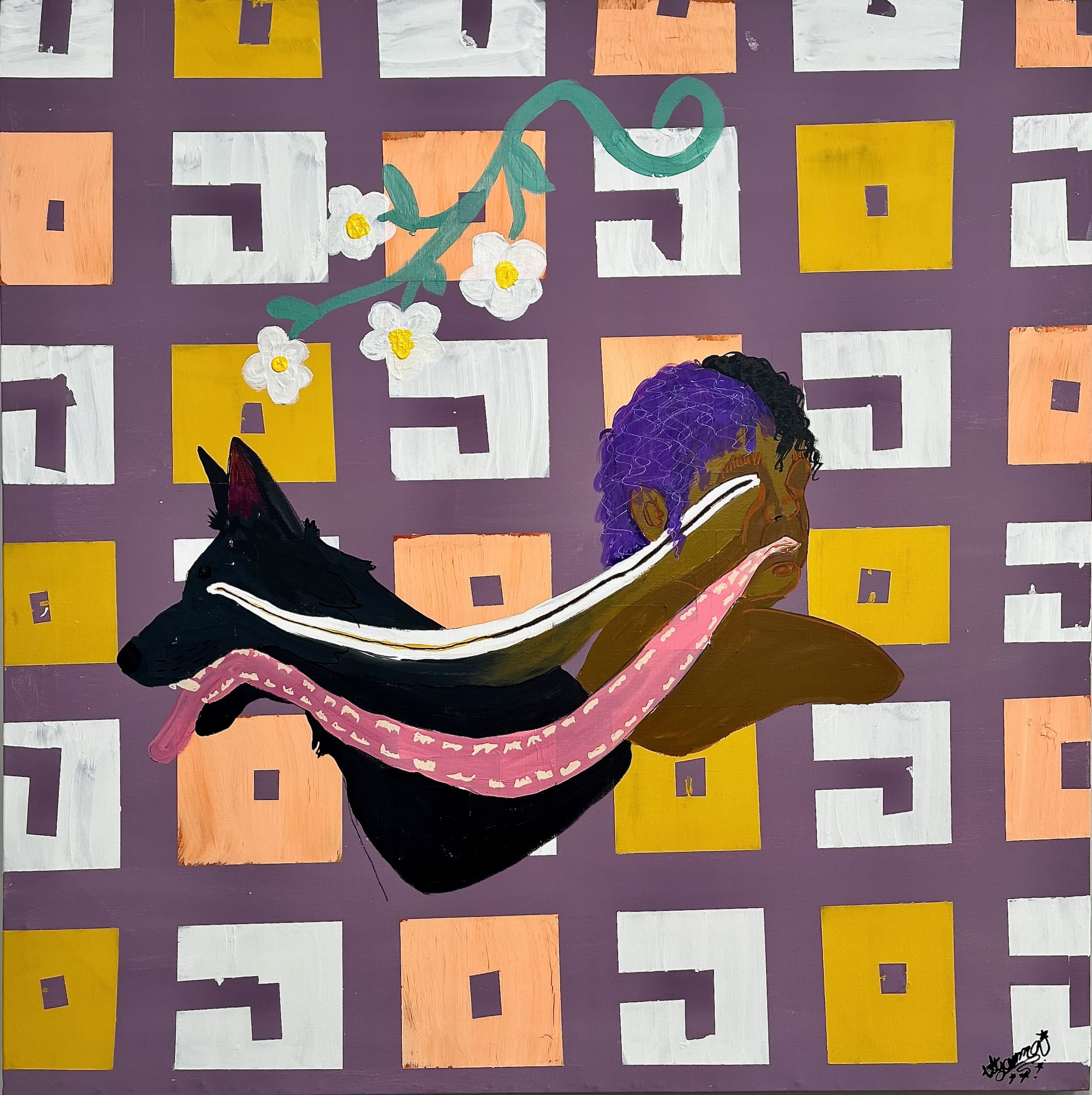
Untitled works by Ayanna Saunders. Photos by Emily Christensen for the SHOUT
In Saunders' works one enters an economy of persons, maybe distinct and maybe not, who regard each other and are in some visceral way innately connected; perhaps by sight and word, or some other intractable proximity immune to time and space. Once again, they watch you watch them watching each other and raise doubts about identity, most of all any presumption you might make about who they are.
The sole exception to "Tetra's" focus on figures is Adrian Ornelas' single contribution "Me Hicieron Quien Soy" — they made me who I am. Ornelas is a professional graphic designer, and "Me Hicieron Quien Soy" is in the same medium.; It’s a flat, graphic collage of those "theys" who made him: a ranch style house, a guitar, shocks of wheat, a classic car, "La Frontera," the Mexican coat of arms, La Virgen de San Juan de los Lagos, and, most enigmatically, an old-fashioned mantle clock set to approximately 5:03. Ornelas moves beyond the body to explore the symphonic assembly of cultural, historical, and ideological forces that act upon all of our bodies, and thus his piece is a most welcome enrichment to the exhibit.

"Tetra Zeros" did what it set out to do, which is to raise not necessarily questions but doubts, quagmires, complications — a mood of now being unsure about who is who and why that matters.
The Details
"Tetra Zeros"
August 2-September 13, 2024, at Mulberry Art Gallery, 2721 E. Central Ave. Suite 215 in Wichita
After "Tetra Zeros" closes at Mulberry Art Gallery, the show will continue in a second wave with new artists. The final dates and events for the second portion will be announced by Mulberry Art Gallery.
Visitor's note: Mulberry Art Gallery is located on the second floor of the Revolutsia shipping container mall. The Revolutsia elevator is currently out of service, so the gallery is accessible only by stairs.
All ages
Free
Jeromiah Taylor is a writer from Wichita, Kansas, and editorial assistant at the National Catholic Reporter.
More visual arts coverage from the SHOUT
 The SHOUTEmily Christensen
The SHOUTEmily Christensen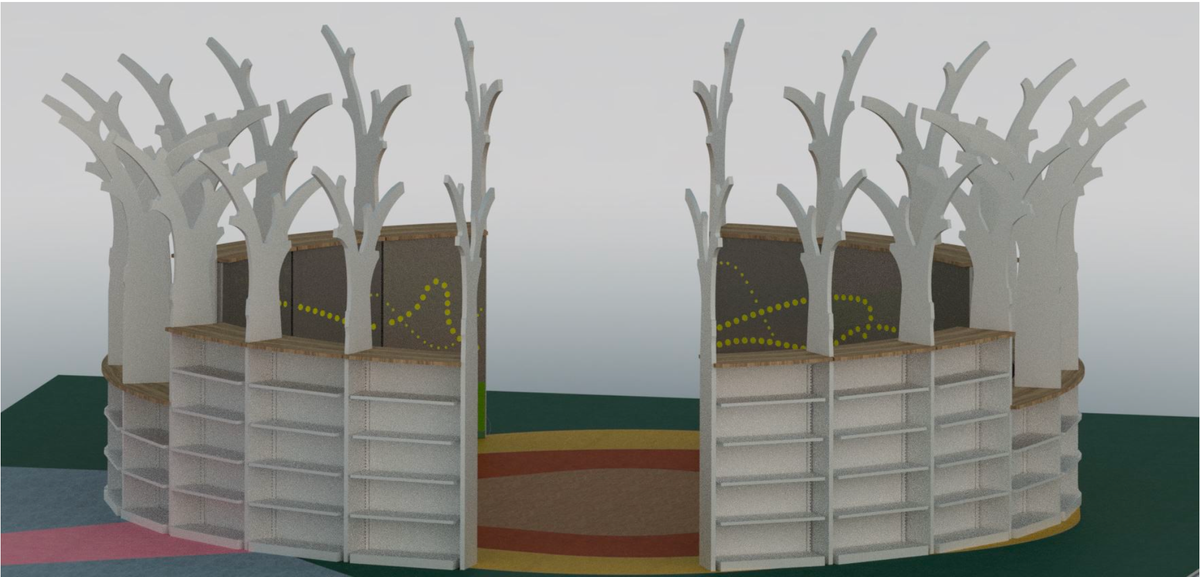
 The SHOUTLori Brack
The SHOUTLori Brack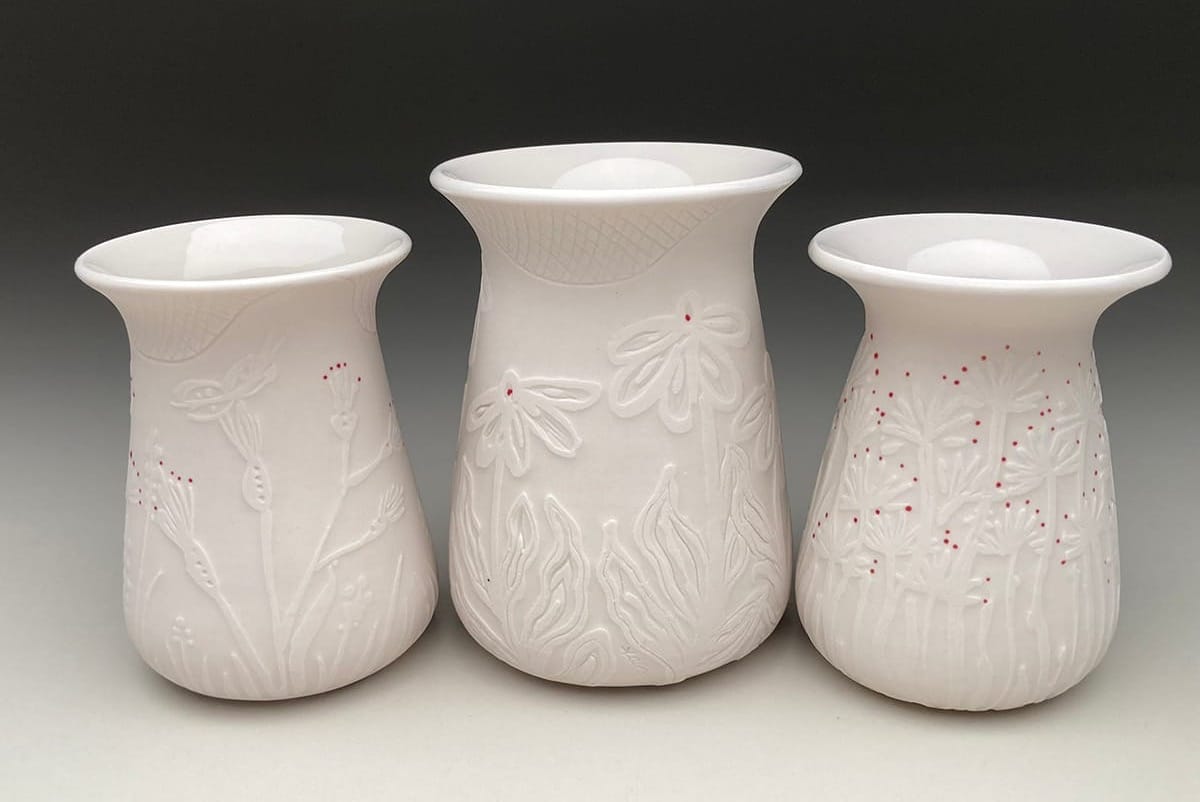
 The SHOUTJacinda Hall
The SHOUTJacinda Hall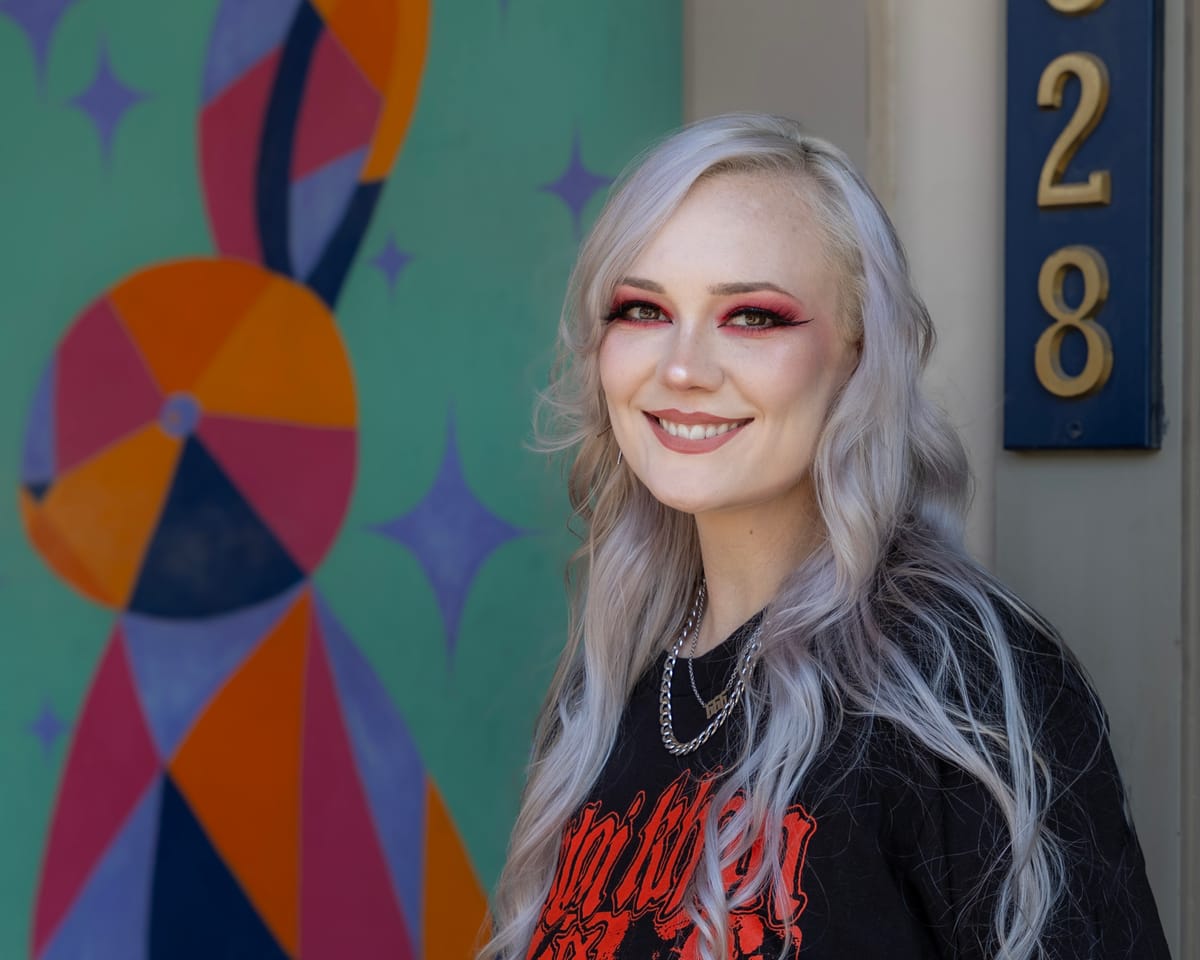
 The SHOUTChloe Lang
The SHOUTChloe Lang
